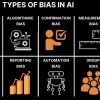Goa is abuzz with excitement as vintage bike and car owners, users, collectors and fans are decking […]
Subledger vs General Ledger: What’s the Big Difference?
Forex Trading February 15, 2024This includes subledgers and individual accounts, ensuring a single, unified record. Its primary purpose is to provide the foundation for creating accurate and reliable financial statements, such as the balance sheet, income statement, and statement of cash flows. These statements are crucial for internal decision-making, reporting to stakeholders, and meeting regulatory requirements. The general ledger acts as the ultimate record-keeper, consolidating and summarizing financial data from various sources within your business. This information flows from different subledgers and accounts, ensuring the general ledger maintains an accurate and up-to-date snapshot of your company’s financial position.
Subledgers capture individual transactions, providing detailed records of each activity. These individual entries are then summarized and periodically rolled up into the general ledger. The general ledger doesn’t track every single transaction, but rather reflects the totals from each subledger.
- For tailored solutions, schedule a demo with HubiFi to discuss how we can help you stay compliant with evolving accounting standards.
- Think of the general ledger as the main hub, providing a high-level overview, while subsidiary ledgers offer the granular details supporting those summaries.
- Think of reconciling your GL and subledgers like balancing your checkbook.
- It is preceded by sub because it is a subcategory of the general ledger.
- This ensures that the detailed records are always current and accurate.
This improved understanding of your financial position allows for more effective planning and resource allocation. Access to detailed, real-time data enables you to identify trends, spot potential problems, and make data-driven decisions to optimize your business operations. The future of ledger systems lies in their seamless integration with business intelligence (BI) tools. Subledgers, with their granular transaction data, play a key role here. While the general ledger provides a high-level overview, subledgers offer the detailed information needed for in-depth financial analysis.
That’s why limited access for entry additions to the general ledger is a key security measure. Only authorized personnel should get the green light to add or change entries, safeguarding confidential details like payroll information from unauthorized eyes. Each subledger gathers information for a specific group of transactions.
Finding the Right Balance Between Detail and Efficiency
Before understanding the difference between them, it is crucial to study each individually. Before entering the ledger, companies sum all transactions and post the total to the ledger. However, some people may confuse about whether they should include these totals in the general ledger or sub-ledger. HighRadius is redefining treasury with AI-driven tools like LiveCube for predictive forecasting and no-code scenario building. Its Cash Management module automates bank integration, global visibility, cash positioning, target balances, and reconciliation—streamlining end-to-end treasury operations. HighRadius stands out as a challenger by delivering practical, results-driven AI for Record-to-Report (R2R) processes.
Scope and level of detail in subledgers and general ledger
Many accounting software solutions offer features to automate subledger creation and updates, streamlining your entire accounting cycle. Learn how HubiFi’s automation solutions can transform your financial processes. Your general ledger isn’t just a collection of random numbers; it’s structured around specific accounts. Each transaction flows into one of these designated accounts, painting a detailed picture of where your money comes from and where it goes. This structured approach is what allows the GL to summarize your financial activity accurately.
All businesses can benefit from this readiness, but it’s particularly crucial for companies with high transaction volumes and or operate across multiple jurisdictions. The balance of each transaction listed here contributes to the total balance of the revenue account in the general ledger. It enlists the financial accounts companies set up for recording transactions. Since sub-ledgers relate to the general ledger, they don’t need a chart of accounts. Therefore, companies also maintain a sub-ledger or subsidiary ledger.
SOX Software
By grasping these concepts, you’ll enhance your understanding of effective accounting practices and discover how they contribute to better decision-making in your organization. The real power of a well-managed subledger system subledger vs general ledger comes from the granular detail it provides. Subledgers allow you to tag transactions with “financial dimensions”—like department, project, or product line. This granular view allows you to quickly identify and address any discrepancies, ensuring the integrity of your financial data. This detailed data allows you to slice and dice your financial information for deeper analysis. Want to know which product line is most profitable or which marketing campaign had the best ROI?
Leverage automation to streamline processes
Regular reconciliation and review processes are essential for verifying the consistency of data between your subledgers and general ledger. Automated data capture tools play a key role, facilitating efficient collection and input of financial transaction data. This integration allows for real-time reporting, giving you immediate access to critical financial insights. By integrating your systems, you can quickly identify discrepancies, ensuring your financial data is reliable and your reporting is accurate. Learn more about maintaining accuracy between your subledger and general ledger in this helpful article.
What is a subledger (or subsidiary ledger)?
This level of insight is crucial for making strategic decisions that drive growth, a topic we explore further in our post on why you should be using subledgers. While it’s true that subledgers are essential for tracking the high volume of transactions typical of larger companies, they can be beneficial for businesses of all sizes. Smaller businesses might not need as many subledgers, but using them can still improve accuracy and offer a deeper understanding of specific accounts, especially as the business grows. It’s less about the size of your business and more about the level of detail and control you want. If you want a truly accurate picture of your business, consider using subledgers.
The General Ledger serves as the central repository for all financial transactions and provides a summary of the company’s financial position. It includes accounts such as assets, liabilities, equity, revenue, and expenses. On the other hand, a Subledger is a subsidiary ledger that provides detailed information for specific accounts or groups of accounts. It allows for more granular tracking of transactions, such as individual customer balances or inventory levels. While the General Ledger provides an overview of the company’s financial health, the Subledger offers more specific insights into various aspects of the business.
- Most modern accounting software allows you to set specific user permissions, giving you granular control over who can do what within the system.
- This is a core principle behind what we do at HubiFi—transforming complex data processes into streamlined, automated workflows.
- This granular approach helps you catch errors early, understand where your money is going, and make more informed decisions.
- This detailed audit trail demonstrates financial transparency and strengthens your credibility with regulatory bodies.
The subledger acts, as noted, as a granular, close-up view of one or more given transactions recorded only in a limited form in general ledgers. Here is where subledgers are of paramount importance compared to general ledgers. This article promises to clear up any confusion by exploring both tools thoroughly.
This separation allows for more efficient processing and detailed tracking. As BlackLine points out, the general ledger holds the summary, while the subledger maintains itemized records. This structure allows for both a bird’s-eye view and a granular analysis of financial activities. Learn more about how HubiFi streamlines these processes by scheduling a demo. Several types of subledgers exist, each designed to track specific financial activities.
By implementing these to your accounting process, you will keep your books balanced and easy to understand. Businesses with many transactions, diverse financial needs, or strict reporting standards need subledger accounting. Accounts receivable subledgers track customer transactions, payment histories, and aging reports. Accounts payable subledgers manage vendor payments, purchase orders, and payment terms.















